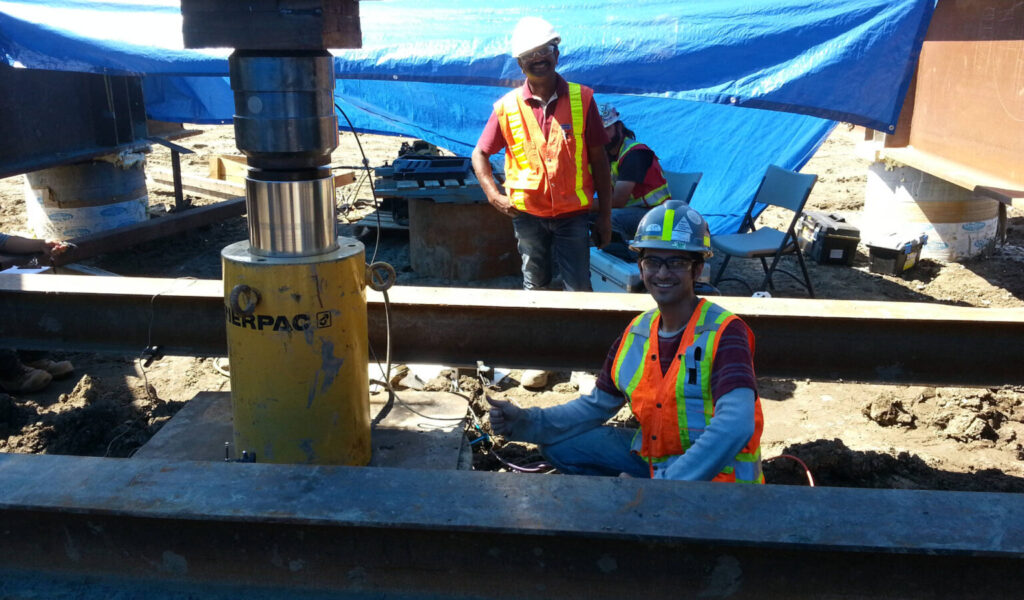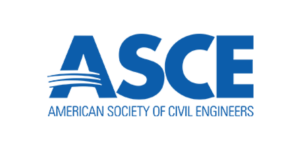













Traditionally, static loading test was the most common way of testing pile foundations. There are several accepted procedures to set-up and perform static loading tests, which are explained in detail in ASTM D1143 (Compressive Test), ASTM D3689 (Tension Test) and ASTM D3966 (Lateral Test). SACL Engineers have developed automated testing systems and data acquisition software to eliminate human error and to increase the reliability and accuracy of measurements in loading tests. With our specialized in-house expertise and advanced technology, we can perform tests of high complexity while capturing applied loads and displacements at high frequency (complete reading of load and displacement gauges every second) and exceptional accuracy. SACL’s Engineers have performed over hundred tests in North America and overseas, including the design of high-load reaction frames and specific testing adapted to special site conditions.
Advantages


Traditionally, static loading test was the most common way of testing pile foundations. There are several accepted procedures to set-up and perform static loading tests, which are explained in detail in ASTM D1143 (Compressive Test), ASTM D3689 (Tension Test) and ASTM D3966 (Lateral Test). SACL Engineers have developed automated testing systems and data acquisition software to eliminate human error and to increase the reliability and accuracy of measurements in loading tests. With our specialized in-house expertise and advanced technology, we can perform tests of high complexity while capturing applied loads and displacements at high frequency (complete reading of load and displacement gauges every second) and exceptional accuracy. SACL’s Engineers have performed over hundred tests in North America and overseas, including the design of high-load reaction frames and specific testing adapted to special site conditions.
Advantages



Yes, bidirectional testing can be performed on bell piles. Bidirectional static load tests (BDSLT) involve installing a load cell within the pile, which applies an upward and downward force simultaneously. This type of testing can accommodate the unique geometry of bell piles, allowing for accurate measurement of their load-bearing capacity and performance under different loading conditions. It is important to note, however, that the pile must have sufficient shaft resistance to counter the end bearing by providing reaction to the bidirectional cell. If this condition is not met, a reaction frame would be needed at the pile head to supplement the shaft resistance.
Yes, bidirectional testing (BDSLT) can replace traditional static load testing (SLT) on many types of piles. BDSLT offers several advantages, including the ability to test the pile’s capacity both in compression and tension using a single test setup. It can provide more detailed information about the pile’s performance and often requires less space and time compared to traditional SLT. However, the applicability may depend on specific project requirements and site conditions. One important condition is the availability of sufficient shaft resistance to provide equal reaction to the cell load in both upward and downward directions.
Bidirectional testing (BDSLT) offers several advantages over traditional static loading tests (SLT):
Dynamic (PDA) or static pile testing (SLT) should be performed ideally before finalizing the foundation design. This is the most effective way to confirm the design parameters and ensuring adequate foundations. Additional testing may be beneficial during the construction phase, after the piles have been installed but before the construction of the superstructure begins. This timing allows for the verification of pile capacity and integrity, ensuring that the foundation will perform as expected under the design loads.
With over three decades at the forefront of the industry, SACL has built an unmatched reputation for innovation and reliability. Serving North America from our offices in Ottawa and Toronto, our expertise has earned the trust of clients across the continent and around the globe.
Whether you’re planning your next major project or have questions about our specialized services, our team is here to provide the support and solutions you need.
Contact us today to learn how we can help drive the success of your most critical projects.

Headquarters
Unit 8,
5330 Canotek Road,
Gloucester,
Ontario K1J 9C3,
Canada.
Phone:
+1-807-700-7225
Email:
info@saclcanada.com
Hours:
Monday to Friday – 09:30 – 17:30 (EST)
Weekends – Closed
© 2024. All rights reserved to Scientific Applied Concepts Ltd. Canada.
You are about to access data that is maintained on a site external to SACL systems.
Please note that SACL is not responsible for the content, privacy policies, or practices of external sites. By proceeding, you acknowledge that the external site may have different cookie settings and data handling policies.